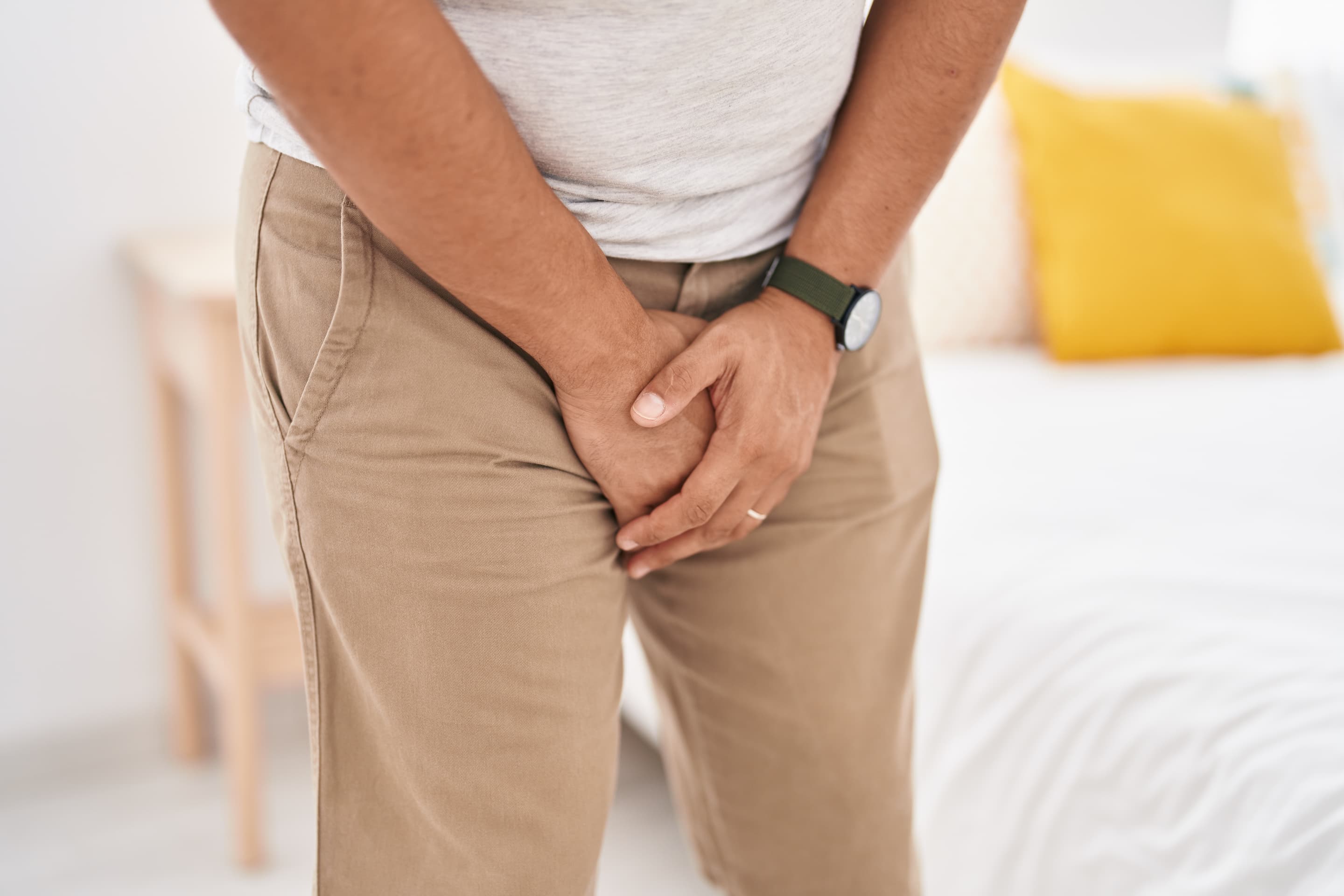Medications for penile yeast infection, creams: medical consultation in as little as 15 minutes
- Experiencing unpleasant symptoms like itching, irritation, or burning?
- Discreet online consultation – talk to a doctor without leaving home.
- Effective treatment tailored to you – receive personalized recommendations and an e-prescription.


Online consultation with a doctor
Symptoms of a penile yeast infection that should alert you: – Itching and irritation – Redness and swelling of the intimate area – Burning sensation while urinating – Discomfort during intercourse
Consultation with a Doctor + e-Prescription
The doctor will conduct a medical interview with you regarding your symptoms and health condition.
After the consultation, if deemed appropriate, you will receive medical recommendations and an e-prescription.
How does it work?
Choose a date for a consultation with a specialist
Book a convenient date and time for your consultation.
Complete a medical questionnaire
Answer a few questions that will help the doctor assess your health. If you are continuing treatment, attach your previous prescription.
Wait for the doctor to contact you
At the selected date, the doctor will call you to conduct a consultation.
Collect your documentation
After the doctor's decision, you will receive a prescription and/or recommendations via text message and e-mail - without leaving your home.
Definition and Symptoms of Penile Yeast Infection
Penile yeast infection, also known as candidiasis of the penis, is a fungal infection affecting men, most commonly in the form of balanitis or inflammation of the foreskin. Symptoms of a penile yeast infection vary but most often include itching, a red rash, penile irritation, and pain, which may intensify during urination. Additionally, abnormal discharge with an unpleasant odor may appear under the foreskin. While it can be sexually transmitted, penile yeast infections can also occur independently of sexual activity—due to a weakened immune system or poor intimate hygiene.
Causes of Penile Yeast Infection
The most common cause of a penile yeast infection is Candida yeast, especially Candida albicans. These microorganisms naturally occur on mucous membranes and skin without causing symptoms. However, under favorable conditions—such as immune suppression, excess moisture, or poor hygiene—they can lead to infection. Sexual contact with an infected partner can also cause transmission.
STIs like chlamydia or gonorrhea can lead to secondary yeast infections. Symptoms such as redness, itching, and pain may also indicate other serious conditions, which is why proper medical diagnosis is crucial.
Risk Factors for Penile Yeast Infection
While any man can develop a penile yeast infection, some are at higher risk:
Weakened immune system
Diabetes (high blood sugar promotes fungal growth)
Excessive sweating (creates a moist environment for yeast)
Poor hygiene
Sexual contact with an infected partner
Antibiotic use (disrupts natural bacterial balance)
Sexually transmitted infections (e.g., chlamydia, gonorrhea)
How to Properly Treat a Penile Yeast Infection
According to ICD-10.N48, penile yeast infection requires pharmacological treatment. Therapy involves prescription or OTC antifungal medications and proper hygiene. Depending on the severity, topical or oral antifungals may be used. Candidiasis of the penis is often transmitted via sexual contact, but hygiene plays a key role. Inadequate cleaning under the foreskin can contribute to infection.
Symptoms include red patches, pustules, white coating, unpleasant odor, and discomfort during urination. If untreated, it can lead to balanitis, infertility, or even precancerous conditions.
What Works: Tablets or Cream?
Penile yeast infection can be treated with antifungal creams or oral tablets. Topical treatments are typically applied several times daily for about 7 days. If ineffective, oral fluconazole is prescribed. Prescription drugs are considered more effective, but OTC creams like clotrimazole can help with mild cases.
Can You Buy Antifungal Medication Without a Prescription?
Yes, some antifungal creams (e.g., clotrimazole) are available OTC. These may help with mild symptoms but are less effective than prescription options. Tea tree oil and anti-inflammatory rinses may also provide symptom relief.
Prescription Medications for Penile Yeast Infection
Effective treatment usually starts with a topical cream. If symptoms persist, oral fluconazole (150 mg) is used. Treatment may involve 3 doses every 3 days, followed by weekly doses for up to 6 months. It's essential to abstain from sexual activity during treatment.
Which Doctor Can Diagnose and Prescribe Medication?
Penile yeast infections are often contracted from infected partners and are rarely discussed due to embarrassment. Diagnosis is straightforward, and a general practitioner, urologist, dermatologist, or sexual health specialist can help. If in-person visits are uncomfortable, consult Dimedic.eu online.
Home Remedies
Home remedies may ease early-stage symptoms: gentle washing with water, avoiding harsh soaps, drying thoroughly, and wearing breathable underwear.
Prevention
Key prevention strategies include:
Regularly washing the glans after retracting the foreskin
Removing smegma
Drying genitalia thoroughly
Wearing breathable, natural-fiber underwear
Avoiding prolonged damp clothing (e.g., swimwear)
Complications
Untreated or recurring infections can lead to bloodstream infections or transmit the infection to a partner. Chronic infections may also cause psychological stress and impact quality of life.
Treatment at Dimedic.eu
At Dimedic.eu, a doctor will call you and, after a brief consultation, issue a prescription for appropriate treatment. Get help discreetly—without hassle, wasted time, or embarrassment. Fill out the form, wait for a call, and start your treatment today!